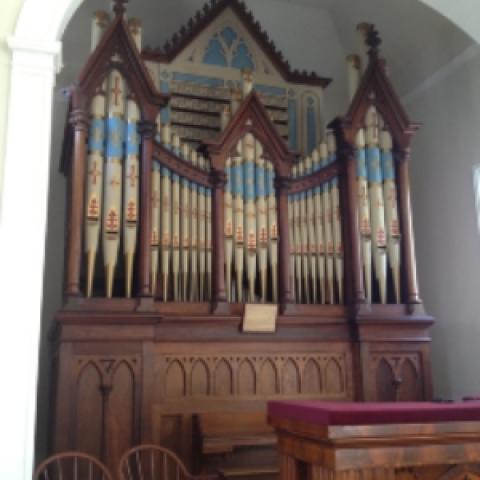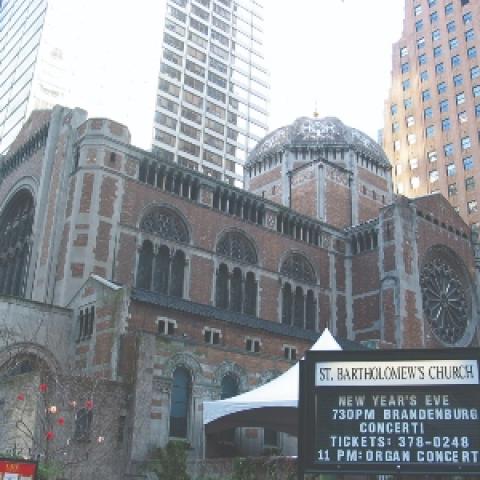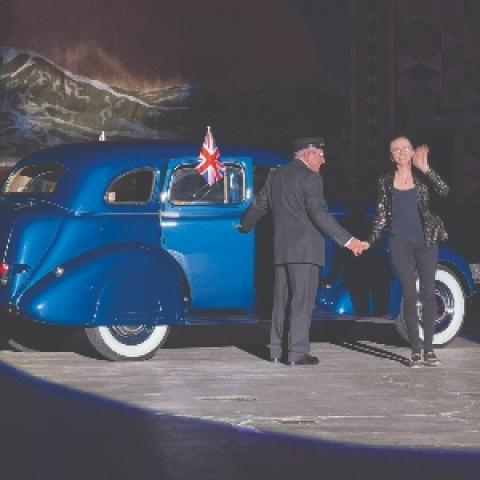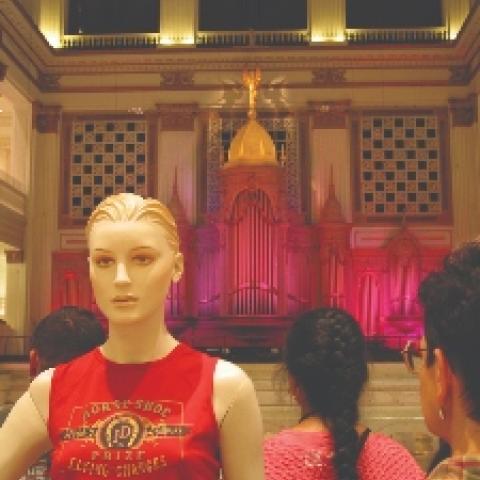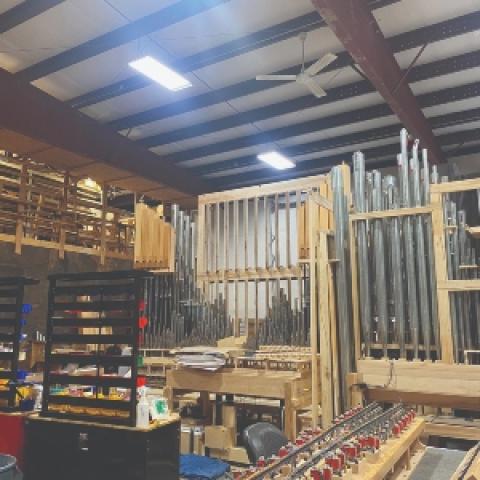
Follow the money.
In the spring of 2023 Wendy and I went to Tuscany, my first time in Italy where we visited Florence and Bologna. We also spent several nights in a villa borrowed from a friend in a small town called Camaiore. Marco runs a wine shop in lower Manhattan and is a classic “foodie.” He gave us a list of the markets where we should mention his name, and we had a blast buying the best Italian ingredients and cooking in his beautiful kitchen. The funny thing was that the drain in the five-foot-wide copper sink was not at the lowest point, so we had to keep pushing the water uphill.
Bologna is a gustatory capital with an extensive district devoted to specialty food shops, and we spent an afternoon with a foodie tour guide. We visited a small “laboratory” where a half-dozen women were making pasta for one of the shops. What magic to watch that ancient craft, and what a delight to sample their products from paper cups while they worked. We had meals in wonderful intimate restaurants and fell in love with the ubiquitous local Sangiovese grapes.
Our visit to Florence was revelatory. I took a half-dozen art history courses in college and have long been aware of the vast collections of art housed in Florence, but I was not prepared for the depth and majesty of the place. I was also not prepared for the vast throngs of tourists pulsing through the narrow streets. Florence is frightfully crowded, but in spite of the bad behaviors of some tourists, it is worth the struggle. Florence is all laid out on streets that were established in the fifteenth century and before, and you never saw such a cute little garbage truck.
We managed a magical moment in the Museo dell’Opera del Duomo (Museum of the Art Works of the Cathedral) by arriving just when it opened while the masses were still sleeping off their Aperol spritzes and were privileged to stand alone for long minutes in the gallery of Michelangelo’s La Pietà, carved from a huge block of Carrara marble and completed in 1555 just before the artist’s eightieth birthday. Once again, a private tour guide helped enlighten us and gained us access for some shorter lines, especially to see Michelangelo’s David.
Giovanni di Bicci de’ Medici founded the Medici bank in 1397, starting a powerful dynasty that became Italy’s wealthiest family. The bank’s early prosperity was based on the busy silk and textile trade in the region and expanded into many other industries, giving the Medici family seats of power that lasted nearly three centuries through the high Renaissance. Many of the official and ceremonial buildings in Florence were funded by the Medicis, who were also patrons of Michelangelo, Brunelleschi, Botticelli, Leonardo da Vinci, and Galileo. They funded the basilicas of Saint Peter in Rome and Santa Maria del Fiore in Florence, which houses a bewildering collection of art. The Medicis’ fingers are everywhere in Tuscany. Wealthy patrons have always been important supporters of the arts, providing funding for iconic buildings, musical compositions, public sculptures, and performance venues.
Running a railroad
Wendy and I moved to Stockbridge, Massachusetts, three years ago and have been feasting on the wide range of cultural institutions in our area. It is an hour drive to Mass MoCA (Massachusetts Museum of Contemporary Art), which occupies a vast old mill building in North Adams, Massachusetts. The Clark Art Institute, also an hour away in Williamstown, Massachusetts, houses a huge collection of fine art by the old masters and contemporary artists. The Norman Rockwell Museum is ten minutes from us. We sometimes walk there using a back way because the grounds are so beautiful and Farley the Goldendoodle loves to run in the surrounding fields. Jacob’s Pillow is a busy dance venue where we attended a performance by the Royal Ballet last week.
The crown jewel of the area is Tanglewood, ten minutes from home, the 500-acre summer home of the Boston Symphony Orchestra (BSO). Serge Koussevitzky (1874–1951) was the conductor of the BSO when Tanglewood was founded. Today it hosts a wide variety of artists including James Taylor (who gave his fiftieth consecutive July Fourth concert there this year), the Boston Pops, and a galaxy of classical stars. In the past week we have heard the brilliant Chinese pianist Yuja Wang play twice, Beethoven’s Fourth Piano Concerto with the BSO in the Koussevitzky Music Shed, the 5,100-seat venue with roof and no walls, and a solo recital in Ozawa Hall featuring eight preludes by Shostakovich, the Barber Piano Sonata, and Four Ballades by Chopin.
Each weekend the orchestra is playing at Tanglewood, the BSO publishes a program book of around seventy-five pages, which includes the programs for four concerts, biographies of the performers, and program notes for all the music. There are brief histories of both the orchestra and Tanglewood, health and safety protocols, and there are six pages listing the donors and patrons who have contributed amounts ranging from $5,000 to “Ten Million and Above.” In this weekend’s book, there are eight names in “Ten Million and Above,” five in “Seven and One Half Million,” sixteen in “Five Million,” thirty-nine in “Two and One Half Million,” and a hundred-twenty-six in “One Million.” The categories imply ranges, those named in the one million group gave between one and two-and-a-half million, but assuming that each gift was at the base amount of the group, those gifts totaled $421,000,000.
Mark Volpe, the BSO’s longtime president and chief executive officer, retired in 2021 after twenty-three years in that position. During his tenure, the BSO’s annual budget increased from $49,000,000 to $107,000,000, and the orchestra’s endowment tripled to $456,000,000.
The current roster of the BSO is published on pages 12–13 of the program book for July 12–14. It includes ninety-four musicians, fifty-three of whom occupy named chairs “endowed in perpetuity.” John Ferrillo has been principal oboe of the BSO since 2001. Before that, he was principal of the Metropolitan Opera Orchestra. In 2015 he was paid $286,621; nine years later it must be significantly more.1 How much money must be set aside to endow Ferrillo’s chair in perpetuity? Enough that the proceeds of the principal will produce over $300,000 which is likely over $6,000,000. Perhaps not all the endowed chairs support salaries as high as Ferrillo’s, but it is fair to guess that they would add up to $245,000,000, and there are another forty musicians in seats that are not endowed. That is what it takes to run that railroad. Toby Oft, the principal trombone, sits in the J. P. and Mary Barger Chair, endowed in perpetuity. Their son Jeff was my pal from fifth to twelfth grades in Winchester, Massachusetts. Like his father, Jeff played the trombone.
In March of 2017 we heard the BSO play Shostakovich’s Leningrad Symphony in Carnegie Hall in New York, the composer’s response to the Siege of Leningrad, the 857-day blockade by the Nazis during which nearly a million people died of starvation. That extraordinary piece opens with a plaintive melody on the oboe accompanied by sparse percussion, and the entire first movement is a great crescendo based on that theme. John Ferrillo was the oboe soloist who recreated the misery and anxiety of the besieged city. He is a terrific oboe player. I wrote about that concert in the May 2017 issue of The Diapason under the title, “Music in a terrible time.”
Wendy and I heard Mark Volpe give a lecture at the Lenox (Massachusetts) Library last April during which he reminisced about the highs and lows of his time with the orchestra, like the winding down and end of James Levine’s career as music director and the search that brought Andris Nelsons to Boston. He mentioned in passing that, unlike any other major American orchestra, the BSO owns 107 buildings. If you spend any time at Tanglewood, you will realize that some of them are lawn mower sheds (there is a mighty amount of mown grass there), emergency weather shelters (violent summer thunderstorms come out of nowhere in the Berkshires), restrooms, and concession stands. But that 107 also includes Symphony Hall in Boston, the Shed and Ozawa Hall at Tanglewood, and the new Linde Center at Tanglewood, among other distinguished buildings. In contrast, the Los Angeles Philharmonic is a tenant in Disney Hall, and the New York Philharmonic and Metropolitan Opera are both tenants at Lincoln Center.
The administrative staff of the BSO takes up two pages of the program book, and development is the largest department with thirty-six directors and associates listed, implying that there is a larger staff supporting the directors. Are there a hundred or more people in the development department toiling away at the business of raising the money for their own salaries and those of the rest of the staff, the orchestra members, and the people running the lawn mowers? They should be the most popular people on campus.
Besides the massive fundraising efforts, the BSO sees significant ticket revenue at Tanglewood. Lawn seats are $22, which buys you space to spread a picnic blanket or set up chairs, and you can see the action on the stage on huge video screens. Seats in the shed range from about $25 to over $100 close up, and we have been to a few signature concerts where the tickets cost close to $200. Remember that the Shed seats 5,100 people, so a good house is bringing in several hundred thousand dollars, or just enough for a year of John Ferillo’s salary.
Before a concert, the Tanglewood lawn is a splendid spectacle. The lawn around the Shed is huge, and thousands of people are likely to be enjoying their picnics. It is amazing how lush and green the lawn is between concerts. There is an elegant marble monument in memory of a revered head groundskeeper, an indication of the importance of that position. Serge Koussevitzky, Leonard Bernstein, and Aaron Copland have statues on the grounds, but a monument to a groundskeeper is pretty good. Someone has to marshal all those lawn mowers, and more complicated, how do you keep grass growing if 4,000 people have picnics on the lawn three times a week? There are rules about bug spray printed in the program books.
Tanglewood was founded with the gift of a 210-acre estate from the Tappan family in 1936. The Tappan Manor House is preserved on the grounds and houses a museum and administrative offices. The first concert conducted by Serge Koussevitzky was held under a tent on August 5, 1937. Eliel Saarinen designed an open-air concert venue, but the $100,000 budget was inadequate, and Saarinen wrote that the proposed budget would be enough for “just a shed, which any builder could accomplish without the aid of an architect.” The trustees of the orchestra enlisted engineer Joseph Franz of Stockbridge, and the shed was dedicated on August 4, 1938.
I marvel at the vision involved in founding such an institution. It took just a couple years to get it off the ground, and within a few years it was flourishing. Koussevitzky founded the Tanglewood Music Center in 1940, which quickly became one of the premier centers for advanced musical training. My trusty program book includes this statement:
Prominent TMC alumni include Claudio Abbado, Leonard Bernstein, Stephanie Blythe, Karina Canellakis, Anthony Cheung, Phyllis Curtin, Christoph von Dohnányi, Michael Gandolfi, John Harbison, Gilbert Kalish, Oliver Knussen, Wynton Marsalis, Ludovic Morlot, Seiji Ozawa, Leontyne Price, Sanford Sylvan, Michael Tilson Thomas, Davóne Tine, Dawn Upshaw, and Shirley Verrett, as well as some 40 current members of the Boston Symphony Orchestra.
And to build an organ?
All of us in the organ building trade are familiar with the task and techniques of raising money as it routinely costs hundreds of thousands of dollars if not several million to build or renovate a pipe organ. Over the years I have come to realize that a community of people banding together to raise a million dollars for a musical instrument is a radical act. It takes vision and commitment, smart guidance, and lots of study. It takes planning, wisdom, and let’s face it, good politics. Organ projects are not successful if they are not supported by a common bond or agreement, a political base. I tell the organ committees that I work with that the hard part of an organ project is creating that foundation and raising the money. The easy part is when you give the money to an organbuilder asking them to do what they know best.
Sometimes an organ is funded by a single gift and a big plaque gets screwed to the organ case. This is especially true at universities and colleges. Sometimes there are several lead gifts, perhaps in six figures, followed by dozens of more modest gifts. I love seeing donor lists that include the few-dollars-at-a-time gifts from Sunday School classes. That is when you know the organ project has wide support in the congregation.
Yuja
I mentioned in passing that Wendy and I heard Yuja Wang play a solo recital at Ozawa Hall at Tanglewood. It was such a special evening that it merits some more comment. As I wrote earlier, the program included music of Shostakovich, Barber, and Chopin. While the preludes of Shostakovich are short, they are complex, meaty, and sophisticated. The Barber sonata is a towering, monumental work, and the demanding four Chopin ballades formed a varied, beefy second half of the program. Last winter, Yuja showed the world her immense stamina by playing all four Rachmaninoff piano concertos and the Variations on a Theme of Paganini in one program that lasted over four hours. The other night her published program was nearly two hours long (including intermission), and as the audience howled in approval, she played six encores including transcriptions of several symphonic movements and the overture to Mendelssohn’s A Midsummer Night’s Dream, including the braying donkey. One of the encores, which I did not recognize, was interrupted by a ringing cell phone, and she abruptly left the stage—but she came back to play three more. I think she really loves playing the piano.
Yuja Wang was born in 1987; she is thirty-seven years old. When she was fifteen, she entered the Curtis Institute of Music to study with Gary Graffman, and that year she won the concerto competition at the Aspen Music Festival. Before she was twenty, she was an international star.
She has dazzling stage presence with a brisk walk to and from the piano, a lightning-fast deep bow from the hips that sets her hair flying, a quick transition from standing to sitting, demanding the audience’s attention with the set of her hands over the keys, and a commanding start for each piece, whether it is a bombastic tour-de-force or a gentle breath. There are hundreds of videos of her playing on YouTube, and you sure can see her flinging a lot of notes around. One of her famous encores is a fantasy on themes from Carmen, and you just cannot believe how many notes are being played, but the sonority of her softest notes, the results of just touching the keys, are a deep part of her magical musical genius.
The other night, we were fortunate to have seats on the stage behind her, and her path to and from the stage door was just a couple feet from us. It is clear to see the love she has for music, for the art of performing, for her audience. Such a roar from that audience. There were several people near us shouting her name at the top of their voices each time she entered the stage and each time the music stopped. They made her smile. I thanked her as she walked past between encores, and she smiled at me. What a night.
Notes
1. Ferrillo’s 2015 salary was published in the Boston Globe on July 16, 2018, in a story about salary equity in the orchestra, as principal flutist Elizabeth Rowe filed a lawsuit claiming that she held a comparable position in the orchestra but was being paid 25% less. Ferrillo wrote in support of Rowe’s claim, stating that she held a position equal in prominence and responsibility to his and that she was an artist of equal ability. They sit next to each other on stage.

